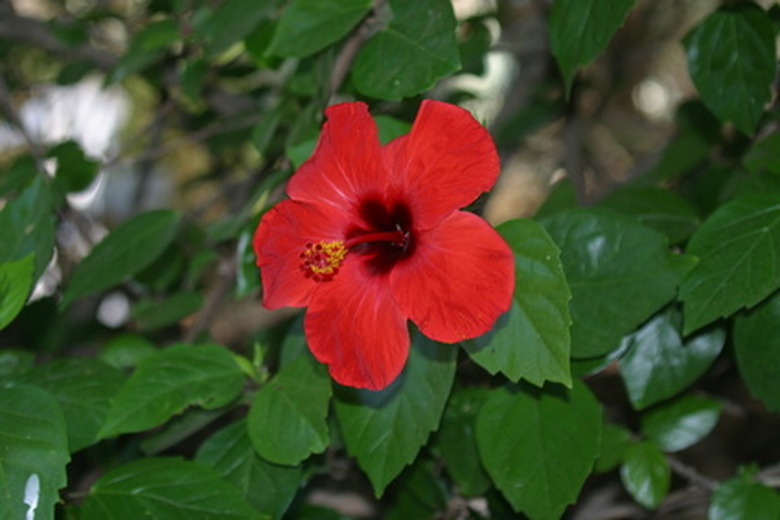Cordate Leaf Identification
Plants as varied as the wild violet, hibiscus and balsam poplar have cordate leaves in common. Cordate is a botanical term meaning "heart-shaped" and is one way that botanists describe a plant's leaves when identifying it. Knowing that you have a cordate leaf is a first step toward identifying the plant species to which it belongs.
Definition
According to Botanical Online, cordate leaves are significantly wider at the base than at the top, proceeding in a slightly rounded shape from the base to the tip. Where the leaf joins the stem, the leaf is slightly notched, giving the leaf a heart shape. Lanceolate and ovate leaves are similar in appearance to cordate leaves but lack the general rounded shape and notched base of the cordate.
Identification
While identifying a leaf as cordate is a strong start in identifying a plant species, only rarely can that alone narrow down the exact species you seek. Plants as diverse as pond lily, dogbane and American basswood trees all have cordate leaves. Identifying a species from a leaf alone requires finding some additional clues.
- Plants as varied as the wild violet, hibiscus and balsam poplar have cordate leaves in common.
- Cordate is a botanical term meaning "heart-shaped" and is one way that botanists describe a plant's leaves when identifying it.
Other Features
Even if all you have is a single cordate leaf, you can nonetheless observe other features that can help you to narrow down a possible species. Naturally, the size and color of the leaf are important. Also note the texture of the edges: Are they smooth or jagged? How are the leaf veins arranged? Even leaves identified definitively as cordate may also vary slightly in shape. For example, the redbud produces an elongated leaf with only a small notch at the base, while the hibiscus is broader, with a more prominent notch.
Tools
According to the Peterson field guide "Eastern Trees," identifying plants requires only a field guide and a hand lens, which can help you detect small details that you might otherwise have trouble seeing when observing the characteristics of your leaf. Naturalist Jim Conrad also recommends identification keys for instances when you have trouble finding a species listed in a field guide.
- Even if all you have is a single cordate leaf, you can nonetheless observe other features that can help you to narrow down a possible species.
- According to the Peterson field guide "Eastern Trees," identifying plants requires only a field guide and a hand lens, which can help you detect small details that you might otherwise have trouble seeing when observing the characteristics of your leaf.
Considerations
Identifying a plant species requires you to put together all of the information that you can observe or otherwise gather about the plant. If all you have is a leaf, it may seem that this extra information is somewhat limited. But you likely do possess information about where the leaf was found, providing clues about habitat and range. Depending on the season when you found the leaf, you may have additional information about fall color or when the leaf emerges in the spring. When identifying a species, be sure that this information matches with what you learn about the range and habits of any potential identifications that you make.
References
- Botanical Online: Types of Leaves
- "Eastern Trees"; George A. Petrides and Janet Wehr; 1998
- Backyard Nature: Identification Keys
- "The Audubon Society Field Guide to North American Wildflowers"; William A. Niering; 1979
